Just Goats - US military operation against Panama (1989)
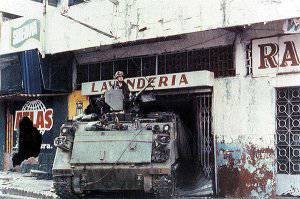 Intervention against Panama was the largest US military action after the aggression in Vietnam. Once again, the world witnessed how American imperialism, having shown complete disregard for the generally accepted norms of interstate relations, grossly violated the UN Charter, took the path of armed encroachment on the sovereignty of an independent state.
Intervention against Panama was the largest US military action after the aggression in Vietnam. Once again, the world witnessed how American imperialism, having shown complete disregard for the generally accepted norms of interstate relations, grossly violated the UN Charter, took the path of armed encroachment on the sovereignty of an independent state.Such interventionist actions are in clear contradiction with those positive trends that are now being strengthened in world politics, with a line of dialogue and politico-diplomatic methods for solving complex international issues. They also show that Washington, who does not miss any opportunity to teach other countries the norms of civilized relations, constantly expressing "concern" about the internal processes that take place in them, is in no hurry to give up the notorious "right" to armed intervention in various areas of the world, arbitrarily declaring them zones of their "vital interests". The commitment to the old imperial thinking, big stick policy and gunboat diplomacy was again demonstrated.
The constant striving of the United States to control the development of internal political processes in Panama is due primarily to the strategic importance of the Panama Canal, which is the largest hub of maritime communications between the Atlantic and the Pacific. It is available for ships of almost all classes, with the exception of certain types of aircraft carriers, and is able to pass ships through the system of twin locks in both directions simultaneously. In 1903, Panama imposed a treaty that allowed the US to occupy the Panama Canal zone and fully control the use of this waterway. In 1977, under pressure from the world public, the US administration was forced to conclude a new agreement providing for the transfer of the channel under the jurisdiction of Panama to 2000, as well as the elimination of US military facilities in Panamanian territory. Here are the command post and headquarters (Quarry Heights) of the combined command of the US armed forces in the Central and South America zone (OK BC USA in the Central Analytical Zone), Howard Air Force Base, the US Navy base station and a number of other important objects.
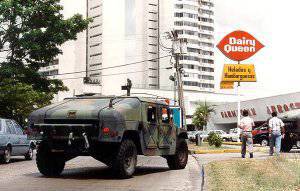 The conflict between the United States and Panama began to mature with the 1937 of the year and was mainly due to the refusal of the Panamanian leadership to provide the country's territory for interventionist actions against Nicaragua. This period is marked by the intensification of Panama’s activities in support of progressive movements in Central America as a whole, as well as in the defense of its own sovereignty and national independence. Therefore, the American administration has relied on the removal from power of General M. Noriega and his government, the establishment of a pro-American regime in the country. In the 1987-1989, almost all methods of military-political, economic and psychological pressure on the republic were used in order to undermine the positions of the leadership of Panama. The culmination of the large-scale and long-term anti-panam campaign was the operation of the American armed forces "Just cause" ("Just Goats" - "Just Cause"), which was carried out in full accordance with the "neo-globalist" concept of "low intensity conflicts".
The conflict between the United States and Panama began to mature with the 1937 of the year and was mainly due to the refusal of the Panamanian leadership to provide the country's territory for interventionist actions against Nicaragua. This period is marked by the intensification of Panama’s activities in support of progressive movements in Central America as a whole, as well as in the defense of its own sovereignty and national independence. Therefore, the American administration has relied on the removal from power of General M. Noriega and his government, the establishment of a pro-American regime in the country. In the 1987-1989, almost all methods of military-political, economic and psychological pressure on the republic were used in order to undermine the positions of the leadership of Panama. The culmination of the large-scale and long-term anti-panam campaign was the operation of the American armed forces "Just cause" ("Just Goats" - "Just Cause"), which was carried out in full accordance with the "neo-globalist" concept of "low intensity conflicts".In an effort to justify themselves in the face of the world community for an armed invasion, representatives of the US administration have repeatedly stated that the objectives of the operation were primarily to protect American citizens in Panama, remove General Noriega from all senior positions and bring him to court as one of the drug mafia leaders. However, a statement by an independent commission investigating the US invasion of Panama, which includes prominent American lawyers, cultural figures and trade union movements, notes that the real goal of the intervention was to “bring the puppet government to power, ready to revise the terms of the Panama Canal Agreements so that 14 US military bases could still be operating for a long time after 2000, when they were supposed to be closed according to contractual obligations. ”
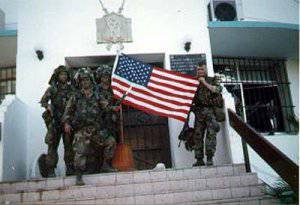 The decision to conduct Operation Just Goats was made by the US President 17-18 December 1989, without prior consultation with the country's congress.
The decision to conduct Operation Just Goats was made by the US President 17-18 December 1989, without prior consultation with the country's congress.According to materials published in the Western press, the plan of the operation envisaged:
- sudden attacks of tactical aircraft aviation at night to defeat the main formations of the national defense forces (SSS) of Panama at the points of permanent deployment, demoralize them and deprive them of the ability of organized resistance;
- joint actions of airborne assault forces, as well as units and subunits of the US armed forces permanently stationed in Panama, seize the most important administrative facilities in the cities of Panama, Colon and Rio Ato, disarm the SNO garrisons and strengthen control over the Panama Canal zone;
- seize General M. Noriega and deliver him to the United States for trial;
- to ensure the establishment of "democracy" in Panama and the transition of state power to the pro-American government of G. Endara.
The operation involved units and subunits from the US OK BC in the zone of the Central Analytical Army, as well as the reinforcement group from the “rapid deployment forces” deployed to Panama to the beginning and during the fighting (see table). The main goals of Operation Just Goats were to be achieved during 4-6 hours.
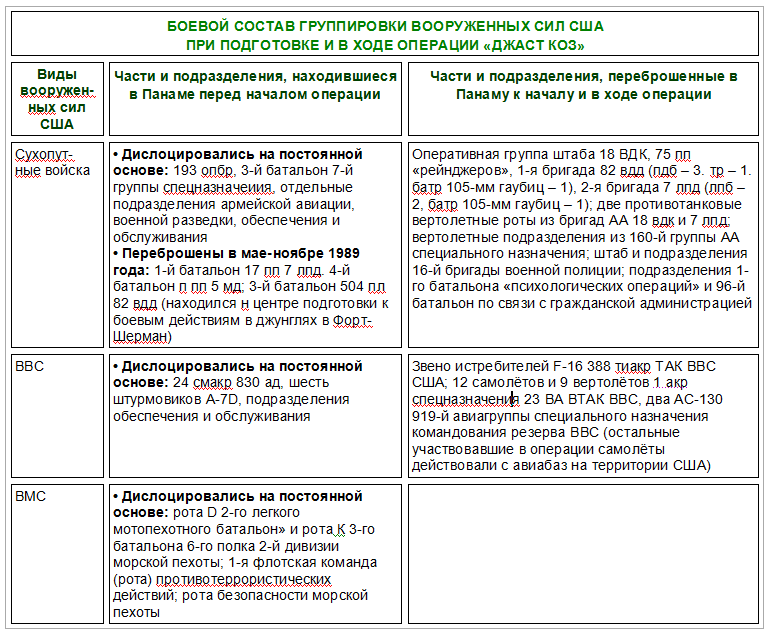
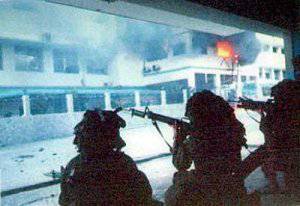 According to the foreign press, in total about 26 thousand American troops participated in the hostilities (almost 13 thousand of them were deployed from the USA from December 20 to December 24, 1989), more than 100 tanks and armored personnel carriers, about 140 field artillery guns and mortars, up to 350 anti-tank missile launchers and 170 army aviation helicopters, and up to 30 combat aircraft. More than 1 people were deployed from the structure of the 23st special-purpose aviation wing 500 of the VA VTAC Air Force, as well as 12 aircraft (seven AS-130N, three MS-130, two NS-130) and nine helicopters (five MH-53J, four MN -60), which performed more than 400 sorties during the operations with a total flight time of over 1200 hours. Two AC-130A aircraft from the 919th special forces aviation group of the US Air Force Reserve Command took part in the hostilities, performing 22 sorties (more than 60 flying hours ) The transfer of troops and equipment was carried out by S-5A, S-130 and S-141 aircraft from the 27 transport air wings of the regular Air Force and their reserves.
According to the foreign press, in total about 26 thousand American troops participated in the hostilities (almost 13 thousand of them were deployed from the USA from December 20 to December 24, 1989), more than 100 tanks and armored personnel carriers, about 140 field artillery guns and mortars, up to 350 anti-tank missile launchers and 170 army aviation helicopters, and up to 30 combat aircraft. More than 1 people were deployed from the structure of the 23st special-purpose aviation wing 500 of the VA VTAC Air Force, as well as 12 aircraft (seven AS-130N, three MS-130, two NS-130) and nine helicopters (five MH-53J, four MN -60), which performed more than 400 sorties during the operations with a total flight time of over 1200 hours. Two AC-130A aircraft from the 919th special forces aviation group of the US Air Force Reserve Command took part in the hostilities, performing 22 sorties (more than 60 flying hours ) The transfer of troops and equipment was carried out by S-5A, S-130 and S-141 aircraft from the 27 transport air wings of the regular Air Force and their reserves.The armed forces of Panama (since 1983, the official name of them is the national defense force) to the beginning of the aggression numbered about 12 thousand troops, including in the land forces and police - 11 thousand (separate infantry battalions - six, separate special forces battalions - two ), The Air Force - about 0,5 thousand, the Navy - up to 0,4 thousand people. The SNS had about 30 armored personnel carriers, more than 50 field artillery guns and mortars, 20 helicopters and 23 auxiliary aircraft, 12 boats. In addition, in 1988, an armed militia (“battalions of dignity”) of about 9 thousand people was additionally created. The militias were mainly in the zone of the Panama Canal and in the western provinces of the country.
The overall leadership of the operation was assigned to US Secretary of Defense R. Cheney and Chairman of the Chief of Staff Committee of General K, Powell, and direct responsibility to the commander of the 18 Airborne Corps, Lieutenant General C. Steiner and Commander-in-Chief of the United States Army Command General M . Termana.
The fighting began in 1.00 (local time) on December 20 of 1989 with sudden strikes of tactical aviation against the main targets (garrisons) of the AtoN in the cities of Panama, Colon, Rio Ato, David, and operations groups from the units specially created for the operation and units of the ground forces and marines (see table). The divisions of the “Rangers” (from special operations forces), after landing, carried out the seizure of designated objects and ensured the landing of transport aircraft with heavy weapons.
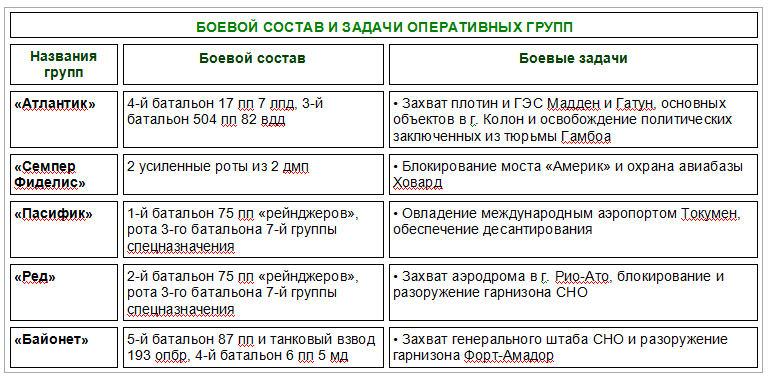
In the first hours of the night airborne operation (the largest after the Second World War), 111 airplanes simultaneously took part, of which 84 (two C-5, 63 C-141, 19 C-130) emitted landing of troops and parachute from 150 –180 m, and 27 (10 C-5, 14 C-141, three C-130) - landing. Later on, during the first day of the operation, another 53 flight was performed: 40 - by C-141 and 13 - C-5 aircraft. In total, from 20 to 22 December, military transport aviation provided for the transfer of military personnel to the 10 600 combat area, and from 23 to 24, in addition, 2400. Heavy weapons and materiel were unloaded at Tocumen, Albrook and Howard airfields.
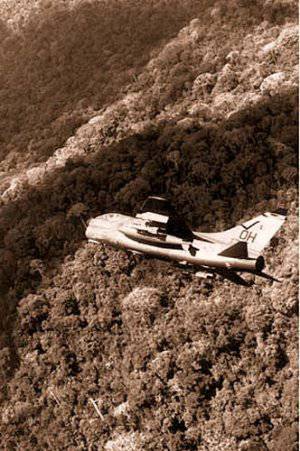 20 December 1989 between 1.00 and 1.30, the Pacific, Atlantic and Semper Fidelis operational teams performed their tasks virtually unhindered. The Bayonet task force during the seizure of the general staff headquarters and the Fort Amador garrison met with resistance from the guard units and was forced to organize an assault with the support of artillery and helicopter gunships, as well as a tank company from the 82 airborne division (17 Sheridan tanks). The command of the Red operational group, when blocking the SNO garrison in the city of Rio Ato, also had to create assault detachments, which, with the support of A-7D aircraft and helicopters, captured the military town barracks.
20 December 1989 between 1.00 and 1.30, the Pacific, Atlantic and Semper Fidelis operational teams performed their tasks virtually unhindered. The Bayonet task force during the seizure of the general staff headquarters and the Fort Amador garrison met with resistance from the guard units and was forced to organize an assault with the support of artillery and helicopter gunships, as well as a tank company from the 82 airborne division (17 Sheridan tanks). The command of the Red operational group, when blocking the SNO garrison in the city of Rio Ato, also had to create assault detachments, which, with the support of A-7D aircraft and helicopters, captured the military town barracks.In the course of carrying out assault operations, according to the American command, it was very effective to use new types of weapons of ground forces, in particular AT-4 anti-tank grenade launchers. Marine units actively used wheeled armored vehicles LAV-25.
At the initial stage of Operation Just Goats, the tactics of the operations of the operational groups were as follows:
- covert and quick advancement to the designated objects along one or several routes, blocking the approaches to them and (in the absence of armed guards) immediate mastery of them;
- organization and conduct of an assault on an object (if there is an organized resistance), during which an overwhelming fire superiority was created using all standard and attached fire weapons;
- maintaining close cooperation between neighboring operational groups (typical of military operations in the city of Panama), as well as army aviation and artillery;
- decentralized use of army aviation and artillery during combat operations in the city.
The main task of airplanes and helicopters from the composition of special operations forces was to make preemptive strikes at previously assigned targets for 10 – 15 minutes before the landing of the assault, as well as to suppress the centers of resistance. For night operations, all crew members (including those from army aviation) were equipped with ANVIS-6S-type night vision goggles (helmet goggles), allowing targeted fire at ground targets and providing identification of their units (through the use of special markings on military clothing, technology and the boundaries of the landing sites).
In the course of the armed invasion of Panama, the American command for the first time used new aviation systems in real combat conditions. weapons: AN-64А Apache helicopter and tactical fighter F-117A, created on the basis of the stealth technology. In total, according to foreign sources, six F-117A aircraft were involved in the operation, two of which took part in an air strike on the garrison objects of the city of Rio Ato (80 km south-west of Panama).
Six A-7D airplanes of the National Guard air force, which were constantly at Hozard air base, took part in the fighting. Replacing them was carried out on the principle of rotation. They made 76 combat missions.
To ensure refueling in the air, the KS-135 and KS-10 refueling aircraft of the US Air Force strategic aviation command were involved. During 12 days they carried out more than 160 flights and transferred about 5000 tons of fuel to the aircraft being filled.
18 aviation guidance aircraft OA-37 24 th 830 hell mixed air wing (Howard Air Base) were actively used. In addition to solving the main task, they conducted air reconnaissance, were involved as repeaters for transmitting instructions and orders of command, participated in organizing the evacuation of the wounded.
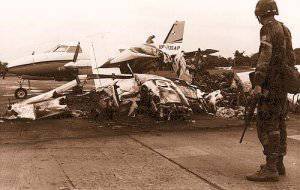 A special role was assigned to the F-16 tactical fighter unit, which, together with the mobile radar detection unit for aerial targets, were transferred from Hill Air Base (Utah) to Panama. According to press reports, they were tasked with preventing a possible attempt by General Noriega to leave the country on a light aircraft.
A special role was assigned to the F-16 tactical fighter unit, which, together with the mobile radar detection unit for aerial targets, were transferred from Hill Air Base (Utah) to Panama. According to press reports, they were tasked with preventing a possible attempt by General Noriega to leave the country on a light aircraft.According to military experts, the following factors contributed to the effective use of US aviation during the invasion:
- lack of air defense system in Panama;
- a clear coordination of the actions of the army aviation and the US air force;
- knowledge of the flight situation in the area of hostilities;
- the advance training (from June 1989 of the year) of flight crews, taking into account the geographical features of Panama, intensive training in landing at night, some of which exceeded the scale of the operation in terms of the number of forces and assets involved.
All this allowed the US command at the beginning of the operation to simultaneously stay in the limited airspace (145x55 km) about 180 aircraft and up to 170 helicopters, eliminating cases of dangerous convergence of aircraft in the air.
20 December 1989 of the year within a day all the operational groups as a whole fulfilled the tasks assigned to them (with the exception of the capture of General M. Noriega). However, by the end of the day in the cities of Panama, Colon, Rio Hato and in the western regions of the country resistance from the militia of the “battalions of dignity” began to grow. With the support of the local population, they suddenly attacked American units in small groups, firing at them with small arms and grenade launchers. There was a real threat of the start of a partisan war.
Under these conditions, the American command decided to transfer to Panama an additional contingent of troops, which began on the night of 20 on December 21 and lasted until the end of December Day 22. 2 Brigade 7 LPD, units of "psychological operations", logistics and medical support, 16 Brigade of the military police were deployed.
By the morning of December 21, the situation in the capital and the provinces had sharply deteriorated. Despite the fact that almost all the SNO garrisons stopped resistance and surrendered, the attacks on the US units of the units of the “battalion of dignity” and the civilian population became widespread. Attempts to seize warehouses with weapons and ammunition have become more frequent. There were looting of the presidential palace and government agencies, primarily from criminal elements, including those released by prisoners from the occupiers. The new government headed by G. Endara, sworn to 20 in December, was unable to control the situation in the country. In this regard, the authority to maintain public order took over the U.S. Armed Forces in the zone of the Central Analytical Chamber. In the capital, a state of emergency was declared.
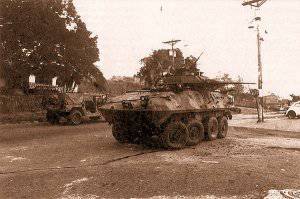 December 22 2.30 headquarters in the United States OK OK BC area was attacked by militias from the battalions of dignity. Up to 1000 people participated in the attack, small arms and hand grenades were used. To reflect it, units of the 2 Brigade 7 lpd and 193 opbr were recruited to the battalion of the 82 airborne division. American units were able to disperse the rebels only after air strikes by AC-130 aircraft and military helicopters, as well as artillery shelling of adjacent quarters.
December 22 2.30 headquarters in the United States OK OK BC area was attacked by militias from the battalions of dignity. Up to 1000 people participated in the attack, small arms and hand grenades were used. To reflect it, units of the 2 Brigade 7 lpd and 193 opbr were recruited to the battalion of the 82 airborne division. American units were able to disperse the rebels only after air strikes by AC-130 aircraft and military helicopters, as well as artillery shelling of adjacent quarters.At dawn, attacks were made on rebel concentration areas in the suburbs of Rio Ato and David, as well as in the department of Chiriqui. At the same time, airmobile operations began to suppress the centers of resistance in these areas. Airborne assault forces (detachments) from the 82 airborne division and 7 lpd, which operated on helicopters, during operations blocked the formations in the western provinces of the country from the “battalions of dignity”, after which they disarmed or destroyed them. According to the US command, this tactic of action brought the desired results by December 23. In almost all parts of Panama, the militia units ceased resistance and surrendered.
With the start of Operation Just Goats, one of the tasks of capturing General M. Noriega was performed by groups from the special operations forces. In the course of the search, the American units, contrary to generally accepted international norms, blocked the embassies of Cuba, Libya and Nicaragua, and allowed acts of lawlessness against the heads of diplomatic missions of these states. Thus, searches of the car of the ambassador of Cuba were repeatedly carried out, violent invasion was carried out around 80 soldiers in the house of the ambassador of Nicaragua. On December 23, the American command received data that M. Noriega was hiding in the residence of the papal nuncio in Panama, and also blocked her with troops.
Secretary of Defense R. Cheney, who arrived on December 23 in Panama, at a meeting of the leadership of the U.S. Armed Forces Command in the Central Analytical Area declared that the goals of Operation Just Goats had been largely achieved and, according to the US President, "the armed forces had successfully completed their tasks." In the future, according to him, “the main role in the establishment of democracy in Panama will be played by the divisions for communication with the civil administration and“ psychological operations ”that are part of the forces of special operations.
3 January, General M. Noriega surrendered to the American command. The withdrawal of US troops transferred from the United States to participate in the operation, as reported by the foreign press, was almost completed on February 14 of the year 1990.
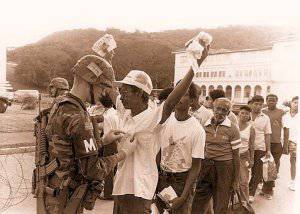 The losses of the American armed forces during the fighting, according to Western sources, amounted to 23 killed and about 330 injured. The national defense forces and the “battalion of dignity” lost 314 people killed and 124 wounded. At the trial of General Noriega, former US Attorney General R. Clark said, referring to data from the Red Cross, hospitals and human rights organizations, that as a result of the intervention, thousands of civilians from Panama died from 4 to 7.
The losses of the American armed forces during the fighting, according to Western sources, amounted to 23 killed and about 330 injured. The national defense forces and the “battalion of dignity” lost 314 people killed and 124 wounded. At the trial of General Noriega, former US Attorney General R. Clark said, referring to data from the Red Cross, hospitals and human rights organizations, that as a result of the intervention, thousands of civilians from Panama died from 4 to 7.During the first two days of the operation, 15 of American military transport aircraft was damaged (four C-141, 11 C-130), 13 of which were returned to service before January 2, and two to 16 January 1990. Such a number of damaged aircraft, according to American military experts, was the result of the transfer of landing time units of the second echelon from night to day, which was caused by adverse weather conditions (delayed departure was 5 h). Four aircraft were lost from 170 helicopters and 45 were damaged (44 of them were returned to service during 24 h).
Armed US aggression against an independent state of Panama shows that, contrary to the spirit of the times, Washington has not abandoned the use of military force to achieve political goals. The excessive superiority of the military contingents participating in the Just Goats operation over the SSS of Panama, the active use of new weapons indicates the interest of the US military and political leadership in getting the maximum number of military personnel to gain combat experience in order to use it in future aggressive actions. As US Secretary of Defense R. Cheney pointed out in a report to the president and congress (January 1990), even if there is a tendency towards a permanent decrease in the Soviet military threat (and this has not happened yet), the United States will still need strength to solve problems in conflict and crisis situations, as well as to fulfill their obligations in various regions of the world.
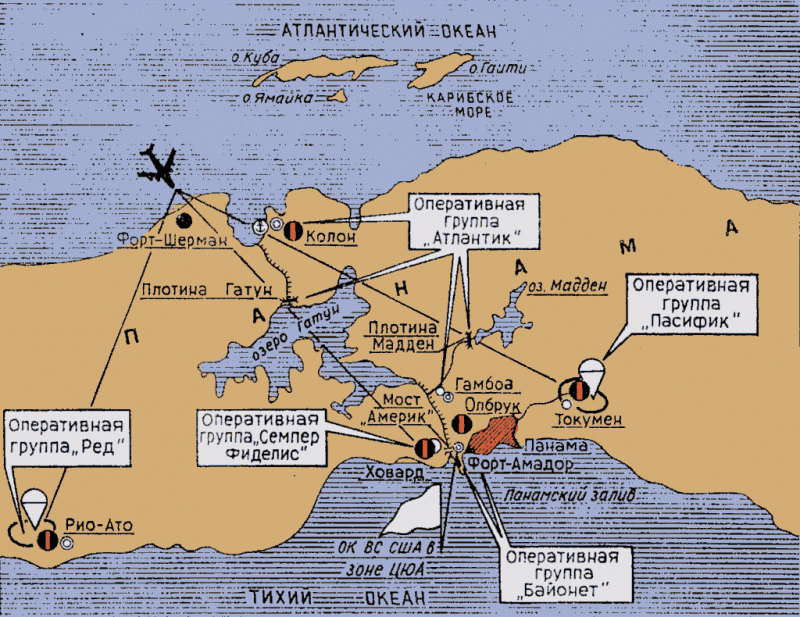
Information